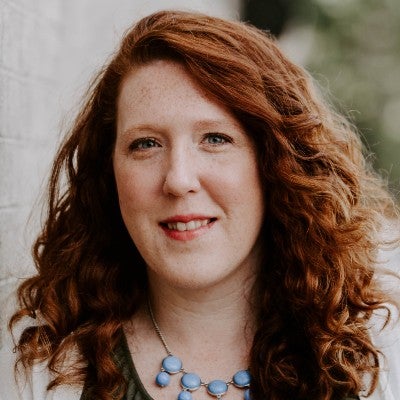You know homeowners insurance provides essential protection for your primary residence, but what if you have a second property, such as a vacation or seasonal home? Do you need to purchase a second home insurance policy?
The answer is yes — if you own a second house, you’ll likely need to purchase a second home insurance policy if you want financial protection for that property.
Here’s what you should know about second home insurance, including what it covers, how much it costs, and who needs this type of policy.
Do I need insurance on a second home?
There are no laws requiring you to carry coverage for your home — first, second, or otherwise — but if you have a second home, you should consider purchasing a policy to protect the property and your assets. Further, if you have a mortgage on the property, your lender will likely require you to carry coverage until you pay off the loan.
How does second home insurance work?
Second home insurance works similarly to standard homeowners insurance. In exchange for an annual premium, your insurance company agrees to cover the property against certain losses, like fire, theft, and certain natural disasters.
Though every policy is different, second home insurance generally covers the following:
-
Dwelling, or the structure of your home
-
Other structures, such as fences, detached garages, and pool houses
-
Personal property, including appliances, electronics, etc.
-
Personal liability, if you or a covered household member injures a third party or damages their property
-
Loss of use/loss of fair rental value coverage, depending on policy specifics
You can also enhance your policy with endorsements, or policy add-ons, such as golf cart insurance and property damage coverage, animal liability coverage, or water backup insurance.
Do I need different types of coverage or limits for my second home?
If you have a second home, you might need a policy with additional coverage, higher coverage limits, or a different type of policy altogether.
For example, if you have a summer beach house near the ocean, you might need to supplement your second home insurance policy with flood insurance. Or, if your property has a pool, you may want to consider increasing your liability coverage, as the pool represents a higher risk of liability claims.
If you rent out your second home, talk to your insurer about how that may affect your coverage needs. Depending on the circumstances, you may need additional coverage or a different type of coverage, such as landlord insurance.
What does second home insurance cover?
Second home or vacation home insurance typically covers the same losses as primary home insurance. These are some of the most common perils covered:
-
Fire, smoke, and lightning
-
Wind and hail
-
Theft
-
Vandalism
-
Weight of snow or ice
-
Falling objects
-
Explosions
-
Accidental discharge of water or steam
-
Damage from vehicles or airplanes
Some secondary or vacation home insurance policies may offer “named peril” coverage. In this case, coverage only extends to issues specifically named in the policy. Always read your policy thoroughly and discuss coverage limitations or exclusions with your insurer.
What does second home insurance not cover?
A secondary home insurance policy covers many of your property's most significant risks, but it doesn’t cover everything. Some typical exclusions include:
-
Flooding
-
Earthquakes
-
Negligence
-
Wear and tear
-
Mold, rot, and mildew
-
Infestations
Do I need different insurance if I rent my vacation home out?
Yes, you may need different insurance if you rent out your vacation or second home, especially if it generates income. However, the amount and type of coverage generally depend on your insurer, policy details, and the duration and frequency of stays.
For instance, if you plan to rent your home for long periods, you’ll likely need landlord insurance or a House & Property policy.
If you’re unsure of your coverage obligations when renting out your second home, contact an insurer to discuss your options.
Considering renting your seasonal property? Learn more about House & Property coverage.
How much does second home insurance cost?
Though second home insurance policies often offer similar types of coverage, you may see higher rates for vacation and beach homes. One reason is that second homes frequently include features that add additional risks, such as pools, hot tubs, and waterfront access.
Location can also significantly affect how much you’ll pay, especially in high-risk areas like coastal communities.
How much will it cost to insure your second home? Get a home insurance quote.
Factors that impact second home insurance premiums
Secondary home insurance premiums vary based on a variety of factors, including:
-
Location
-
Age of the home
-
Size of the home
-
Building materials used
-
Roof type
-
Value of the home (replacement cost)
-
Claim history
-
Coverage limits
-
Deductibles
-
Policy endorsements
Second home insurance coverage limits and deductibles
When you purchase insurance for a second home, you’ll need to select coverage limits and deductibles. Here are some common coverages, recommended limits, and other considerations to help you determine the best coverage amounts.
-
Dwelling coverage. Choose enough coverage to cover the cost of rebuilding your property based on current labor and material costs.
-
Other structures coverage. Limits are generally set at 10% of your dwelling coverage. However, you may want to purchase more coverage if the value of other structures on the property, such as a pool, detached garage, or guest house, exceeds the standard coverage amount.
-
Personal property insurance. Coverage is generally 25% to 50% of the dwelling coverage limit, but this can vary by where you live. Further, you may want more coverage if the value of the items within the second home exceeds that amount.
-
Liability insurance. You should consider carrying at least $300,000 in liability insurance. However, you may want to purchase more coverage if you entertain often or if the property has high-risk structures, such as a pool, hot tub, or waterfront dock.
Tip: If you need more liability coverage, consider looking into an umbrella policy. This type of policy enhances your overall liability coverage, picking up where your home and auto insurance liability limits leave off.
Deductibles
Deductible options vary by insurer, policy, and even where you live. They often range from $500 to $10,000, though they may be a percentage of your dwelling coverage, such as 2% or 5%.
Depending on where you live and the policy you purchase, you may have different deductibles for wind-related damage.
Higher deductibles lead to lower premiums, but you’ll pay more out-of-pocket after a claim. Lower deductibles mean you’ll pay less out of pocket, but your premium may be slightly higher. Always choose a deductible you can easily manage should the unexpected happen.
How to get second home insurance
To get home insurance for your vacation house, seasonal getaway, or other second property, follow these easy steps:
-
Determine your coverage needs. Consider how much coverage you need and what deductible makes sense for your situation. It’s also helpful to think about how you’ll use the property. For instance, will you only use it a few months a year? Rent it out? These questions can help you determine the type of coverage you may need.
-
Get quotes from at least three companies. Get quotes from at least three home insurance companies, including the insurer that issued the policy for your primary residence — you may be eligible for a discount. Make sure to get quotes for the same type and amount of coverage for an equal comparison.
-
Compare quotes and research insurance companies. Comparing quotes can help you narrow your search, but price shouldn’t be the only factor in your decision. Compare each company’s financial strength rating, customer reviews, digital and mobile tools, and discounts. Also, consider any policy differences, such as available or included endorsements, that may make one policy better suited for your needs.
-
Purchase your policy. Once you find the best coverage, you can purchase your policy. If you financed your second home, make sure you have proof of coverage in time for closing, as it’s generally required.
How to lower second home insurance cost
If you want to reduce your second home insurance premium, there are a few things you can do. Here are some tips for getting a cheaper policy:
-
Bundle your policies. You can typically save money on coverage by purchasing multiple policies, such as home and auto, from the same company.
-
Take advantage of other discounts. Many insurance carriers offer multiple discounts, including those for paying your annual premium in full, enrolling in automatic payments, insuring a new home, or having no prior insurance claims.
-
Make safety improvements. Most home insurance companies offer savings to homeowners who install certain safety features on their property, such as a fire alarm system, fire sprinklers, a water detection system, or a home security system.
-
Shop around. Before you purchase second home insurance, shop around and get quotes from several insurance companies. Comparison shopping can help you find the best and most affordable policy for your second home.
Challenges of insuring a second home
Sometimes, insuring a vacation home can present unique challenges. Here are some common issues you may encounter as you shop for and maintain coverage:
-
High-risk features. Pools, hot tubs, waterfront views, and other common second-home benefits carry higher risks and can lead to higher premiums.
-
Weather-related risks. If your second home is along the coast or in an area prone to wildfires, floods, or hurricanes, you may pay a higher premium or have trouble securing coverage.
-
Vacancy and limited use. If your home is vacant for a certain amount of time, such as 30 or 60 consecutive days, your policy may limit coverage. Periods of vacancy can also increase the risk of vandalism, theft, or even freezing pipes or undetected water damage — all of which increase perceived risk.
-
Rental restrictions. A standard home insurance policy may not cover potential perils if you’re renting out the property, even for a few weeks a year. Evaluate your intended usage and speak to an insurance agent about the best way to protect your property and assets.
Even though a second home insurance acts much like a standard homeowners policy for a primary residence, there are often additional considerations that will determine your coverage needs. Always shop around for a policy and discuss coverage details with your insurer.





